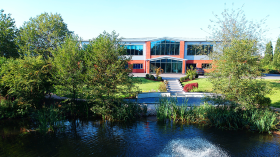In the heart of the UK's payment landscape stands allpay Limited, a pioneering force led by the visionary founder and entrepreneur, Tony Ki
Latest Supplier News
Borg & Overström is a UK manufacturer of premium drinking water solutions. For over 20 years Borg & Overström has developed sustainable, bottle-less, hygienic, drinking water dispensers with the aim to provide exceptional, safe, self-service drinking water into schools, universities, workplaces and communal spaces.

 With autumn upon us, and classes well under way, the education sector should be ensuring that schools, colleges and universities are as safe and secure for staff and pupils as possible. Perimeter security and access control systems are a crucial element to any building’s security plan, providing the ability to control, monitor and restrict the movement of people, assets or vehicles in, out and round an area. This is absolutely essential for the educational sector, where buildings have busy footfall and specific areas need to be secured from being accessed by non-personnel.
With autumn upon us, and classes well under way, the education sector should be ensuring that schools, colleges and universities are as safe and secure for staff and pupils as possible. Perimeter security and access control systems are a crucial element to any building’s security plan, providing the ability to control, monitor and restrict the movement of people, assets or vehicles in, out and round an area. This is absolutely essential for the educational sector, where buildings have busy footfall and specific areas need to be secured from being accessed by non-personnel. 








